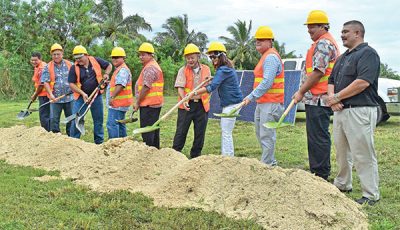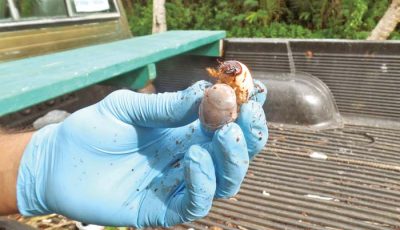Saipan animal survey seen to guide disaster response
The Division of Agriculture, in collaboration with the Office of Animal Health & Industry, recently conducted a Livestock and Poultry Survey for producers of cattle, swine, goats, poultry, ducks, pigeons, turkeys, rabbits and deer on Saipan.
Two survey teams were created.
Dr. Ignacio Dela Cruz, the CNMI State Veterinarian, said the survey was intended to guide the CNMI’s response in the event of a disaster, so that a meaningful and effective disaster response and coordination could be mustered and achieved.
“The survey conducted showed the following number of animals on Saipan: 377 heads of cattle, 999 swine, 170 goats, 4,840 chickens, 196 ducks, 212 pigeons, four turkeys, two rabbits, [and] 16 deer.
“With this information, a realistic disaster planning, preparedness and response could be worked out. Supplies, materials, animal feeds, and pharmaceutical needs for poultry, livestock and other farm animals could easily be made available because the numbers are there and are current to work with,” he said.
Dela Cruz said there are a total of 49 producers, ranchers and farmers in which 22 represented cattle raisers and 36 swine producers, 19 raising goats, 18 raising ducks, 38 raising poultry, nine raising pigeons, two raising turkeys, two raising deer and one raising rabbits, with only one producer, Saipan Egg & Poultry, operating a commercial egg laying operation with about 2,000 layers.
“Of the 22 cattle producers, seven were leasing government land to raise their animals, which varied from one to 25 hectares, with a total of about 62 hectares of government land being leased to raise cattle.
The above numbers are combined numbers of all the animals in each category, regardless of sex or age. Obviously, this does not present a clear picture of Saipan’s farm animal populations. The numbers also do not represent the total animal population within each category and more detailed classification and wider coverage must be planned and worked out,” he said.
Dela Cruz added that in the case of an outbreak such as an incursion of foot-and-mouth disease, avian influenza, exotic Newcastle disease or classical swine fever (hog cholera), reliable data on farm animals is needed.
“A decision to vaccinate, depopulate or to treat the target animals would be more efficient because we would know how much vaccine or medicine would be required, or in the event of depopulation or an eradication effort, the decision whether to incinerate, bury, landfill or do composting would be easier to reach or make because they would know how much mass or animal carcasses they would be dealing or working with,” he said.
Acting Lands and Natural Resources secretary Augustin Kaipat said the next survey will separate the animals by sex and age groups.
“The survey was started and completed in September. The work was not inclusive of the available farm animals on Saipan and a more comprehensive survey will be undertaken hopefully in the next year. We thank Dr. Dela Cruz for initiating this survey and our team members: Robert Magofna, Joe Takai, Manny Quitano, and Ben Cabrera,” Kaipat said. (PR)



























